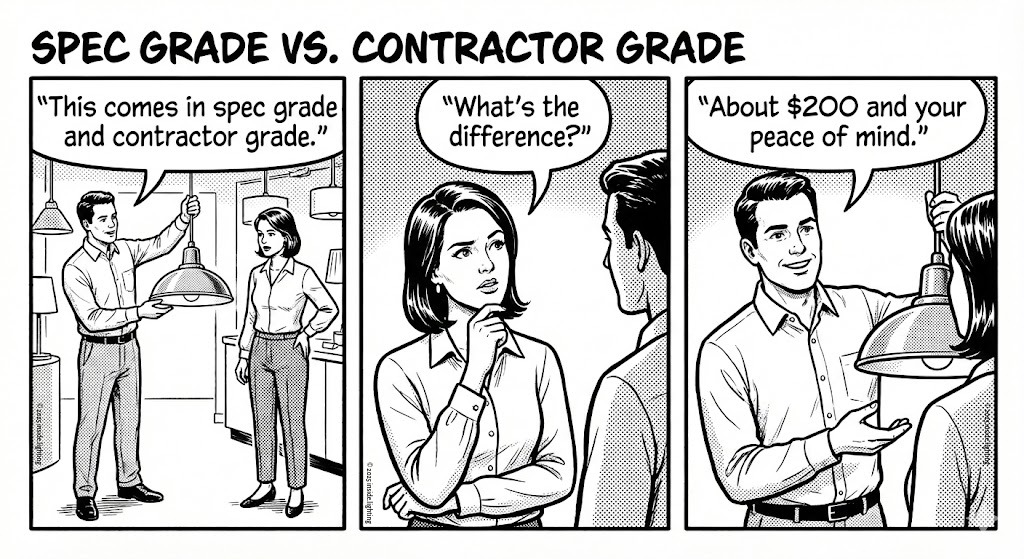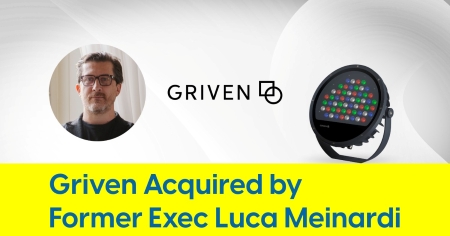October 21, 2024
Pricing Transparency in Focus at IALD Enlighten Americas

A measured discussion explores unit pricing, margins and substitutions
Attendees filled a hotel ballroom on Friday, October 18, at the IALD Enlighten Americas 2024 for the third installment of an annual panel discussion, “Speaking Truth: A Plan to Achieve Greater Transparency in the Lighting Channel,” held at the Rancho Bernardo Inn in San Diego, California. The full house was predominantly made up of architectural lighting designers and manufacturers of architectural lighting products.
This year’s panel featured a seasoned group of professionals, including Alexis Arnoldi of Cline Bettridge Bernstein Lighting Design, Chip Israel of Lighting Design Alliance, Jimalee Beno of Legrand, and Nancy Stathes of Specialty Lighting Industries. Other panelists included distributors Daniel Clark of Walter’s Electric Wholesale, Lara Cordell of Weidenbach Brown, and lighting agent Bruce Dalrymple of Performance Lighting. The panel was moderated by Steven Rosen of Available Light, who skillfully guided the conversation to encourage thoughtful and respectful dialogue.
Compared to last year’s sometimes vigorous debates, marked by impassioned audience participation and discussions on sensitive issues like overage — a markup that lighting agents charge to cover their overhead or enhance profits — this year’s audience participation was more measured. Despite revisiting familiar topics such as high profits, lack of transparency, substitutions and pricing strategies, the audience tone was notably calmer, fostering an atmosphere of collaboration and respect.
Focus on Unit Pricing
As the panel delved into various topics, unit pricing became a recurring theme throughout the session.

Above (L to R): Chip Israel, Nancy Stathes, Jimalee Beno, Alexis Arnoldi
Nancy Stathes, President of Specialty Lighting Industries, was clear about the importance of providing lighting designers with unit pricing. “Reps should be giving you unit prices,” Stathes said. “Every manufacturer in this room will give you unit prices, and the reps are aware of that.” Her comments highlighted the need for clearer communication between manufacturers and the broader channel to enable more accurate expectations of project costs.
Shoshanna Segal, based in New York City and a principal of Hartranft Lighting Studios, echoed Stathes' sentiments but added an additional layer. “If unit prices were really easy to come by, there would be no package markets,” Segal noted. “I really need to understand how we combat this, and what manufacturers, distributors, and reps are doing to prevent this, because it’s strangling us.” Segal’s remarks highlighted the growing challenges facing lighting designers in managing budgets and pricing expectations with the designers’ end clients.
Industry Changes and Market Challenges
Jimalee Beno of Legrand pointed to the broader shifts in the market as contributing factors to lighting project challenges. “The market is changing,” Beno said. “Those changes, are having very strong effects on your specifications.” She illustrated the growing complexity with more manufacturers than ever, a comparison to the pre-COVID era when territories were more defined, and relationships were clearer.
Chip Israel’s comments emphasized the complexities lighting designers now face, focusing less on pure design and more on managing budgets, energy codes, and coordination. He highlighted that the product chain isn't exploitative but rather a system where fair compensation and effort are often not visible. Israel praised the behind-the-scenes work of distributors and reps, acknowledging the challenges they face with incomplete project details, such as unclear ceiling heights or specs.
Israel also noted that electrical contractors often underprice jobs to win contracts, making up for it through fixture alternatives, which may impact quality. While this is seen as problematic, he recognized that from a business perspective, it can help owners get jobs done at a lower upfront cost. Finally, Israel criticized the narrow focus of efforts to solve these issues, calling for broader collaboration across the entire industry—including architects, reps, and distributors—to improve transparency, ensure fair profits, and deliver high-quality designs without cutting corners.
Substitution Conversations Continue
Another key topic of the session was product substitution. Bruce Dalrymple, representing the agency side, addressed the issue candidly. “Every time a substitution request comes in, we have to vet that with the salesperson who works with the lighting designer and see what are they aware of” to determine the facts and rationale behind the substitution request. This highlighted the potential risks substitutions can pose to design integrity, particularly when contractors push for lower-cost alternatives that may not meet the original specifications.
Dalrymple’s comments resonated with others who expressed concerns that contractors sometimes exploit claims of unavailable products as an excuse to push through substitutions, raising questions about whether such delays were avoidable with earlier coordination.
A Measured and Collaborative Tone
Despite the persistent challenges raised, the overall mood of the event was one of constructive engagement. Panelists and attendees alike approached sensitive topics with openness and a willingness to listen to one another’s perspectives. As Rosen, the moderator, pointed out early in the session, the goal was to uncover “group think techniques to uncover strategies that raise mutual awareness and a free and competitive marketplace.”
In contrast to the emotional appeals of last year, the discussion this year leaned more toward intellectual debate, reflecting a more measured and collaborative approach to discussing transparency issues in the lighting industry.
As the IALD Enlighten Americas 2024 panel concluded, it became clear that while some progress is being made in discussions about pricing transparency, challenges remain. The lighting industry continues to evolve, and stakeholders are increasingly aware of the importance of clear communication, mutual respect, and collaboration across the value chain.










